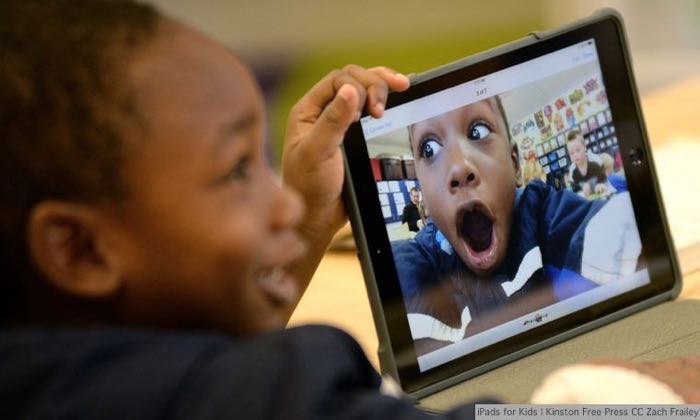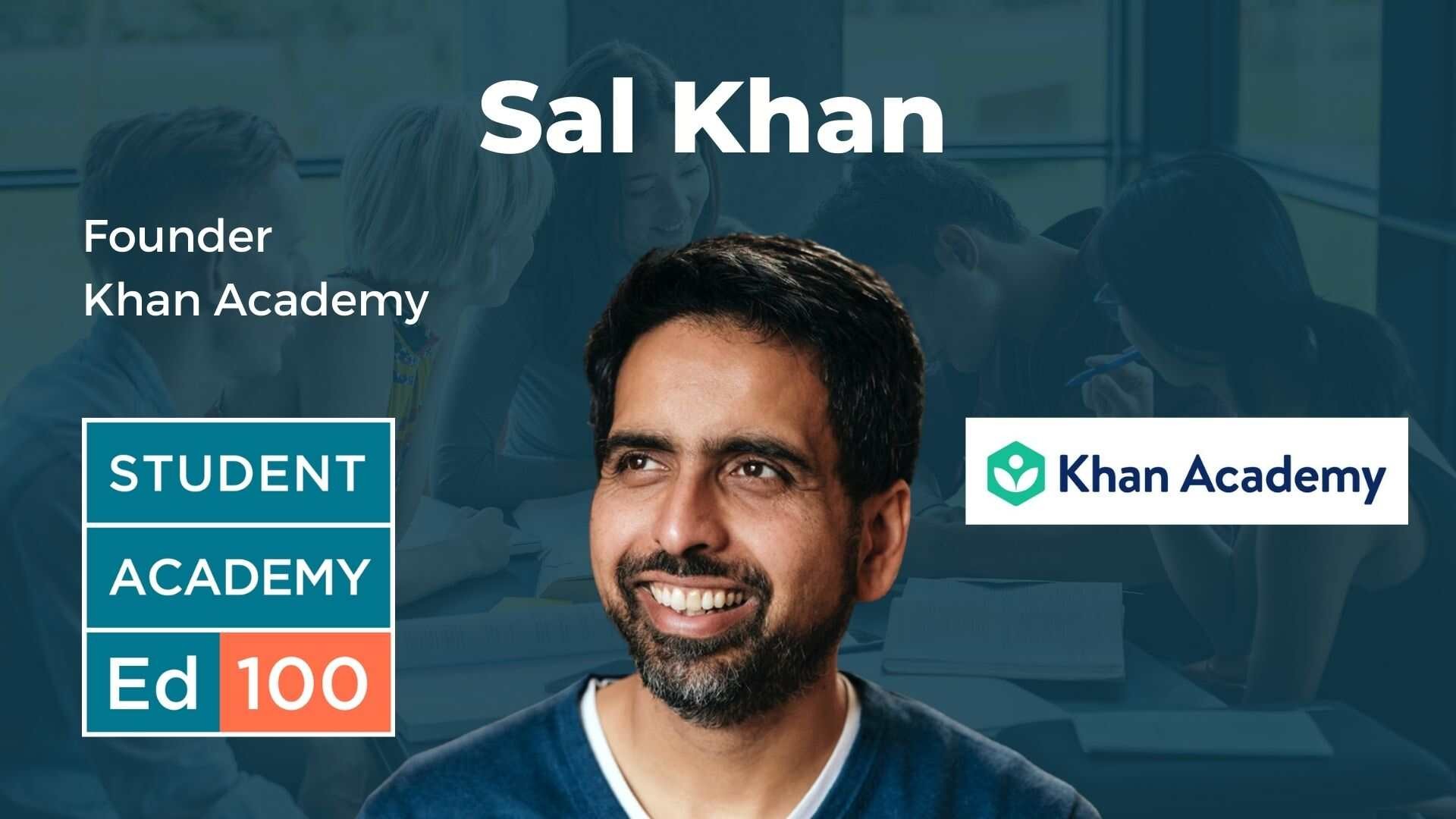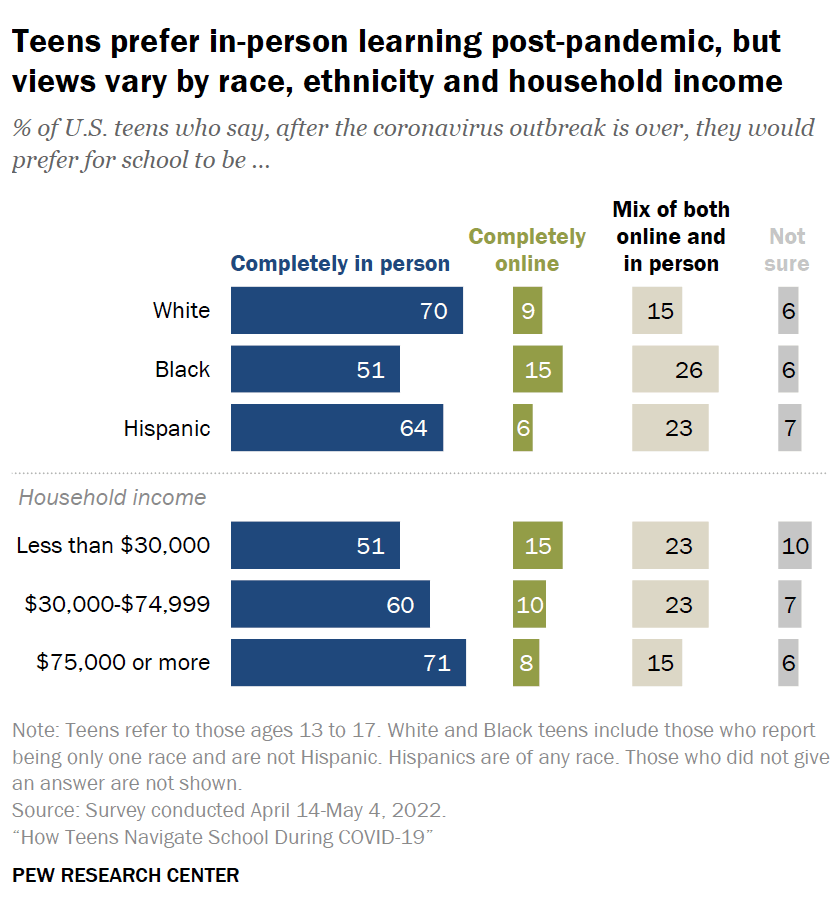
It seemed that schools were impervious to change.
In This Lesson

What is blended learning?
Does technology help students learn?
What is a virtual school?
How can we get more computers for our school?
How can my school get money for technology?
Should our school use iPads?
What technology should my school have?
▶ Watch the video summary
★ Discussion Guide
Until recently, classrooms looked just as they had 50 years ago, with the possible change from a blackboard to a whiteboard. But that’s the way change happens. All of a sudden, the future arrives.
All of a sudden, the future arrives.
Advances in technology are constantly changing the way that students learn, both in and out of school. The oracles of this revolution, Clayton Christensen and Michael Horn, predicted the path that these changes would take in the 2008 book Disrupting Class. They argued that educational software and online teaching would fundamentally disrupt the way that schools work and the ways that children learn. It would start out awful, they predicted, but it would improve steadily and become mainstream.
When students want to know or learn something, they go online. In an internet minute, teachers became the second-best alternative, replaced by the oracles of YouTube. The global digital capital of time-wasting cat clips is also the most attractive way for students to learn things they want to know, from the science of slime to the history of the world, hilariously delivered in under 20 minutes.
Blended learning = teachers + tech
Some of California’s highest-performing charter schools pioneered the jump to using technology for daily instruction, setting the stage for all schools in the pandemic. In education lingo, the combination of learning from both teachers and technology is sometimes called blended learning. The implications can be significant, if schools really lean into it.
Among the earliest pioneers in blended learning was a charter school network called Rocketship The big idea was to combine traditional instruction, technology, and tutoring to allow every student to learn at their own pace, whether they are catching up or racing ahead. They dubbed the approach "flipping the classroom" because it aimed to reverse the use of classroom time. In most classrooms, teachers explain new concepts to students in a big group, and then students are supposed to practice the skills on their own at home. In a "flipped" model, students practice in the classroom and new concepts can be introduced through videos individually assigned as homework.
Technology doesn't need to be fancy to be effective. One of the most celebrated websites for education is Khan Academy, which began modestly as a big set of short YouTube videos. One person, Sal Khan, posted simple lessons on subjects from algebra to venture capital. Thousands around the globe have benefitted from his patient, clear tutorials. Today, the site is no longer just for the individual learner; it includes tools to help teachers, parents, and other "coaches" support students as they learn. Technology has a charming tendency to become better and cheaper over time.
Some schools are proving faster than others in taking advantage of the possibilities of tech in learning. Consistent with Christensen’s theory, in America many of the first students to take advantage of online learning were homeschool students, whose parents chose not to enroll them in regular schools for religious or other reasons. Online learning also offers enormous promise for economic development in high-poverty settings; in the early days of the internet, education researcher Sugata Mitra documented examples of students self-organizing to learn from online resources without even the benefit of a teacher to guide them.
Virtual schools
Computing power and connectivity shifted homeschooling to a new, fast-growing format: virtual schools. In its most pure manifestation, a virtual school is organized as a charter school. Students enroll, receive a computer if they don’t have one, and sign up for online courses. But virtual schools are evolving fast and can take many forms. Students may work with teachers and other students online and by phone. They may meet in person. They may be oriented toward self-paced learning, or may have a fixed schedule. Some virtual schools focus on credit recovery, enabling students that are behind schedule to earn a diploma while taking a break from their school environment. Many highlight their schedule flexibility, enabling students to nurse a newborn, or work a day job to earn money for their family. Some focus on offering an accelerated path to college.
And some are awful. In 2016 the California Department of Justice reached a multimillion dollar settlement agreement with a for-profit online charter school operator over alleged violations of California laws. In 2019 the California legislature banned for-profit charter schools altogether.
But true to the Clayton Christensen's prediction, technology is everywhere in education. Clearly, the pandemic accelerated a process that was happening anyway. Despite the problems, the digital revolution has come to schools and it looks like it is here to stay, with one big obstacle: infrastructure costs money.
Infrastructure costs money
Each student needs digital access at school and at home to learn and do homework. This is a universal infrastructure requirement, like clean water and electricity.
There is nothing inevitable about the future shape of this revolution in learning. Khan Academy and YouTube are free, but computers, tablets, networks and tech staff aren't. Schools face real costs to cobble together the computers, tablets, routers and switches that make connectivity possible. Even if a school’s digital infrastructure is up-to-date (occasionally true), training for teachers and school staff is expensive, and maintaining a network is a job that requires staff. Technology-savvy individuals have many employment options, and schools struggle to attract and retain staff with technical skills. If your school doesn't have the networks and computers that students and teachers need, contact your school board. School districts in California have wide discretion in how they use funds. Ask whether there is a plan to fund technology infrastructure in an upcoming bond measure.
Inconsistent access to education technology can contribute to achievement gaps. In schools in well-off neighborhoods, internet access reaches every corner of every classroom. But this kind of access is far from universal.
Schools are becoming similar to "grown up" workplaces, where technology is vital and complex.
As they became connected, schools became more similar to "grown up" workplaces, where technology is vital and complex. In businesses, technical leaders make good money and serve an influential role. Schools making a digital transition need expert leadership, too. Windows, Mac or Linux? Microsoft Office or Google Docs? Chromebooks or iPads? What's allowed? What's not? What happens when things break? Because school budgets are ultimately reflections of value, school boards face tough decisions: Should money go toward teachers or tablets or technical support staff?
Technology at home: the homework gap
As technology-based tools for learning continue to improve, the meaning of homework is changing. "Papers" don't involve paper - they are submitted as Google Docs. Teachers can assign video lessons. Students can collaborate on digital projects. Of course, all this technical innovation is no help at all for students without decent computers and effective internet access.
The gap at the outset of the pandemic was massive. Based on survey of U.S. adults in April 2021, children from lower-income households faced a disproportionate homework gap. 23% of low-income children needed to use public WiFi networks in order to complete school assignments because their signal at home was unreliable.
The April 2021 survey also found that parents with lower and middle incomes were more likely to report that they found it difficult to help their kids navigate tech for online learning. Rural and urban parents struggled more than their suburban counterparts.
In 2022, most schools were back to in-person operation. With the benefit of hindsight, Pew Research asked teens what they preferred: in-person or remote learning? Generally, most students preferred to be in person:
Consistent network access is essential for students, as important as binder paper and #2 pencils. Adequate "signal" is essential not just for the office of the school principal, but for each classroom and meeting space and, more difficult still, for each home where children live, study and learn. Past generations have built America's universal access to clean water, modern roads, and reliable electricity. To avoid leaving children behind, this generation must find ways to equip schools, homes, and shelters with effective universal network access.
Some argue that unless schools embrace digital tools for students and teachers they risk becoming irrelevant. The general theme of "relevance" is taken up in the next lesson.
Updated July 2017, March 2019, December 2021, November 2022
CHAPTER 6:
The Right Stuff
-
The Right Stuff
Overview of Chapter 6 -
Grade-Level Standards
What is the Common Core? -
Is School Challenging Enough?
Academic Rigor -
Literacy in California
Ensuring All Kids Can Read, Write and Speak English -
STEM Education in California
Science, Technology, Engineering and Math -
Why Are Tests Important?
Why Tests Matter and How They Work -
Technology in Education
Tools for Teaching and Learning -
Student Engagement
How to Make School Interesting -
Arts Education
Creativity in California Schools -
P.E. and School Sports
How Does Sweat and Movement Help Learning? -
Field Trips
Beyond the Classroom -
Career Technical Education
Vocational Learning, Dual-Enrollment, and Internships -
Service Learning
Civic Engagement and Helping Others -
Teaching Soft Skills
Social-Emotional Learning -
Can Values and Habits be Taught?
Character Education -
Civics, History and Geography
How Do Kids Learn About Their Country and the World? -
How do Kids Become Bilingual?
World Language Learning in California Schools -
Financial Literacy in California
Learning to Earn
Related
-
Motivation
What Motivates Students? -
Student Leadership
Student Voice in Schools -
Teacher Development
How Do Teachers Improve? -
School Facilities
What Should a School Look Like? -
Home Schools
How Do They Work? -
STEM Education in California
Science, Technology, Engineering and Math -
Student Engagement
How to Make School Interesting -
Career Technical Education
Vocational Learning, Dual-Enrollment, and Internships -
Standardized Tests
How Should We Measure Student Learning? -
What if Schools Had More Money?
What Do the Rich Schools Do? -
Are Lean School Budgets Good for Kids?
Do Lean Budgets Make Schools More Innovative?
Sharing is caring!
Password Reset
Search all lesson and blog content here.
Login with Email
We will send your Login Link to your email
address. Click on the link and you will be
logged into Ed100. No more passwords to
remember!
















Questions & Comments
To comment or reply, please sign in .
francisco molina January 12, 2022 at 4:16 am
Selisa Loeza October 25, 2021 at 8:56 pm
Some children living with family who do not speak English or struggle in general with technology. Some may be raised by more elderly guardians who do not understand technological advancements, etc. Supporting them as they support students is crucial.
Anna Meza January 23, 2021 at 11:17 pm
Jenny Greene July 27, 2020 at 7:33 am
Susannah Baxendale February 2, 2019 at 11:54 am
Jamie Kiffel-Alcheh November 12, 2019 at 9:13 pm
Carol Kocivar May 20, 2018 at 3:24 pm
"Full-time virtual schools and blended learning schools represent promising ideas... Unfortunately, the evidence is overwhelming that virtual schools as currently implemented are not working at primary and secondary levels of schools."
Read the report
Carol Kocivar November 4, 2017 at 1:48 pm
A review of the research by Brookings finds that online students do better with blended learning (since it includes face to face teacher interaction ) and academically challenged students do worse in online than in face-to-face courses.
https://www.brookings.edu/research/who-should-take-online-courses/
Jeff Camp January 19, 2017 at 2:14 pm
francisco molina December 7, 2022 at 2:39 pm
Carol Kocivar July 14, 2016 at 8:16 pm
Education NEXT looks at the research and provides a discussion of the pros and cons.
http://educationnext.org/promise-and-pitfalls-of-virtual-charter-schools-vander-ark-richmond/
Albert Stroberg May 1, 2016 at 8:05 pm
Liz Fischer June 30, 2015 at 6:10 pm
Paigey Girl April 22, 2015 at 9:03 pm
trckrnnr April 15, 2015 at 9:00 am
Veli Waller April 10, 2015 at 8:08 am
cnuptac March 26, 2015 at 10:47 am
CM January 19, 2015 at 3:48 pm
Technology is growing at a fast pace. The world will be a completely different place by the time these children graduate from high school. We must do whatever it takes to prepare our children for careers in 21st century workplaces.
Arati N June 23, 2014 at 7:36 am